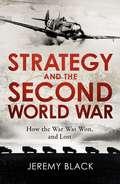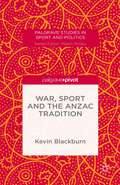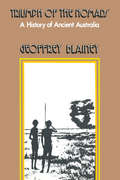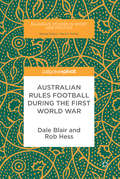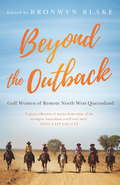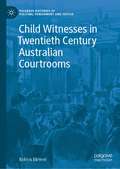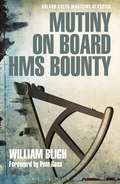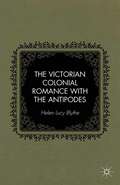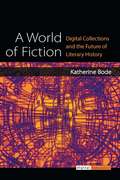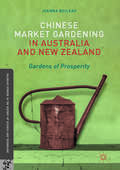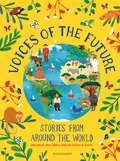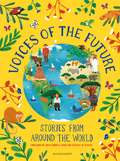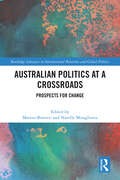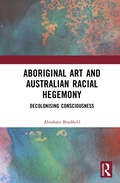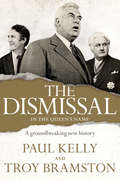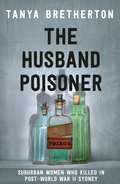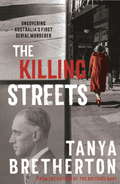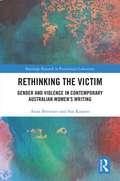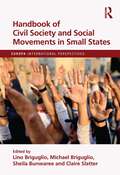- Table View
- List View
Strategy and the Second World War: How the War was Won, and Lost
by Jeremy BlackA concise, accessible account of strategy and the Second World War. How the war was won . . . and lost..In 1941, the Second World War became global, when Nazi Germany attacked the Soviet Union; Japan attacked the United States at Pearl Harbor; and Germany declared war on the United States.In this timely book, which fills a real gap, Black engages with the strategic issues of the time - as they developed chronologically, and interacted - and relates these to subsequent debates about the choices made, revealing their continued political resonances.Beginning with Appeasement and the Soviet-German pact as key strategic means, Black examines the consequences of the fall of France for the strategies of all the powers. He shows how Allied strategy-making was more effective at the Anglo-American level than with the Soviet Union, not only for ideological and political reasons, but also because the Americans and British had a better grasp of the global dimension.He explores how German and Japanese strategies evolved as the war went badly for the Axis powers, and discusses the extent to which seeking to mould the post-war world informed Allied strategic choices from 1943 onwards, and the role these played in post-war politics, notably in the Cold War. Strategy was a crucial tool not only for conducting the war; it remains the key to understanding it today.
War, Sport and the Anzac Tradition (Palgrave Studies in Sport and Politics)
by Kevin BlackburnCommemoration of war is done through sport on Anzac Day to remember Australia's war dead. War, Sport and the Anzac Tradition traces the creation of this sporting tradition at Gallipoli in 1915, and how it has evolved from late Victorian and Edwardian ideas of masculinity extolling prowess on the sports field as fostering prowess on the battlefield.
Australian Rules Football During the First World War (PDF)
by Dale Blair Rob HessThe book explores the intersection between the Great War and patriotism through an examination of the effects of both on Australia’s most popular football code. The work is chronological, and therefore provides an easy path by which events may be followed. Ultimately it seeks to shine a light on and provide considerable detail to a much-ignored period in Australian Rules football history, including women’s football history, that was subject to much upheaval and which reflected considerable social and class divisions in society at the time. One hundred years on, the Australian Football League presents past soldier footballers as unequivocal representatives of a unifying national ‘Anzac’ spirit. That is far from the reality of football’s First World War experience.
Beyond the Outback: Gulf Women of Remote North West Queensland
by Bronwyn BlakeTwenty women share their incredible stories of surviving and thriving in the remote Australian 'Gulf Country', near the Gulf of Carpentaria.Gulf women are self-sufficient, generous, and can cope with almost anything that life and the environment throws at them: floods, drought, sickness, emergencies. Whether they are graziers, fisherwomen, ringers, women in tourism, aviation and education, Indigenous women or descendants from early women settlers, this powerful book gives these women a voice to tell their own stories.There are stories of new mothers on properties isolated and inaccessible for months in the wet season; women giving birth at home with only neighbours to assist; reminiscences from last century and World War II, and accounts of fishing in the Gulf in sometimes unimaginable conditions.From the kids wanting a baby croc for a pet to the terror of a snake bite with a flooded airstrip and impassable roads, these women treat the extraordinary events in their lives as just part of their remote way of life.Set in a world of vast landscapes, distance and merciless climate, Beyond the Outback contains riveting tales of the lives of the women who live, work and raise families in one of Australia's most isolated regions. It will be loved by readers of Sara Henderson, Toni Tapp Coutts and Terry Underwood.
Child Witnesses in Twentieth Century Australian Courtrooms (Palgrave Histories of Policing, Punishment and Justice)
by Robyn BlewerThis book considers the law, policy and procedure for child witnesses in Australian criminal courts across the twentieth century. It uses the stories and experiences of over 200 children, in many cases using their own words from press reports, to highlight how the relevant law was – or was not - applied throughout this period. The law was sympathetic to the plight of child witnesses and exhibited a significant degree of pragmatism to receive the evidence of children but was equally fearful of innocent men being wrongly convicted. The book highlights the impact ‘safeguards’ like corroboration and closed court rules had on the outcome of many cases and the extent to which fear – of children, of lies (or the truth) and of reform – influenced the criminal justice process. Over a century of children giving evidence in court it is `clear that the more things changed, the more they stayed the same’.
Mutiny On Board HMS Bounty (Great Illustrated Classics #Vol. 19)
by William BlighOn 28th April 1789 a small and unremarkable merchant vessel became one of the most famous ships in maritime history. HMS Bounty was under the command of 34-year-old Lieutenant William Bligh, an inexperienced commander who lacked the respect of a crew attracted to the promise of an easy life in a Tahitian paradise.Fletcher Christian led half the crew in mutiny against Bligh and after overpowering all resistance, they cast their deposed captain adrift along with those still loyal to him. Luckily for Bligh, his skills as a navigator were better than his skills as a captain and he managed to sail the 23ft boat 3,618 nautical miles to Timor in the Dutch East Indies with no chart or compass, and only a quadrant and a pocket watch for navigation. On returning to England he reported what had happened, and the Royal Navy hunted down and captured most of the mutineers.However, this is only half the story – William Bligh's version. The captured mutineers went on trial and their testimonies give a much less heroic portrait of their former captain, accusing him of unduly harsh treatment. Fletcher Christian's older brother Edward, a judge, oversaw a more balanced account of the mutiny. Of the mutineers who returned to England, only three were hanged; four were acquitted and three pardoned.This book gives the fullest version of the mutiny, allowing Bligh's account to sit alongside those of his detractors. The discrepancies are fascinating, and allow us to make up our own minds about this infamous mutiny.Also includes an exclusive Foreword by former World Sailor of the Year Pete Goss, who offers a unique perspective on the trials and tribulations of the Bounty's crew, whether castaway or mutineer.
The Victorian Colonial Romance with the Antipodes
by H. BlytheThis study treats the Victorian Antipodes as a compelling site of romance and satire for middle-class writers who went to New Zealand between 1840 and 1872. Blythe's research fits with the rising study of settler colonialism and highlights the intersection of late-Victorian ideas and post-colonial theories.
A World of Fiction: Digital Collections and the Future of Literary History (Digital Humanities)
by Katherine BodeDuring the 19th century, throughout the Anglophone world, most fiction was first published in periodicals. In Australia, newspapers were not only the main source of periodical fiction, but the main source of fiction in general. Because of their importance as fiction publishers, and because they provided Australian readers with access to stories from around the world—from Britain, America and Australia, as well as Austria, Canada, France, Germany, New Zealand, Russia, South Africa, and beyond—Australian newspapers represent an important record of the transnational circulation and reception of fiction in this period. Investigating almost 10,000 works of fiction in the world’s largest collection of mass-digitized historical newspapers (the National Library of Australia’s Trove database), A World of Fiction reconceptualizes how fiction traveled globally, and was received and understood locally, in the 19th century. Katherine Bode’s innovative approach to the new digital collections that are transforming research in the humanities are a model of how digital tools can transform how we understand digital collections and interpret literatures in the past.
Chinese Market Gardening in Australia and New Zealand: Gardens of Prosperity
by Joanna BoileauThis book offers a fresh perspective on the Chinese diaspora. It is about the mobilisation of knowledge across time and space, exploring the history of Chinese market gardening in Australia and New Zealand. It enlarges our understanding of processes of technological change and human mobility, highlighting the mobility of migrants as an essential element in the mobility and adaptation of technologies. Truly multidisciplinary, Chinese Market Gardening in Australia and New Zealand incorporates elements of economic, agricultural, social, cultural and environmental history, along with archaeology, to document how Chinese market gardeners from subtropical southern China adapted their horticultural techniques and technologies to novel environments and the demands of European consumers. It shows that they made a significant contribution to the economies of Australia and New Zealand, developing flexible strategies to cope with the vagaries of climate and changing business and social environments which were often hostile towards Asian immigrants. Chinese Market Gardening in Australia and New Zealand will appeal to students and scholars in the fields of the Chinese diaspora, in particular the history of the Chinese in Australasia; the history of technology; horticultural and garden history; and environmental history, as well as Asian studies more generally.
Chinese Market Gardening in Australia and New Zealand: Gardens of Prosperity(PDF)
by Joanna BoileauThis book offers a fresh perspective on the Chinese diaspora. It is about the mobilisation of knowledge across time and space, exploring the history of Chinese market gardening in Australia and New Zealand. It enlarges our understanding of processes of technological change and human mobility, highlighting the mobility of migrants as an essential element in the mobility and adaptation of technologies. Truly multidisciplinary, Chinese Market Gardening in Australia and New Zealand incorporates elements of economic, agricultural, social, cultural and environmental history, along with archaeology, to document how Chinese market gardeners from subtropical southern China adapted their horticultural techniques and technologies to novel environments and the demands of European consumers. It shows that they made a significant contribution to the economies of Australia and New Zealand, developing flexible strategies to cope with the vagaries of climate and changing business and social environments which were often hostile towards Asian immigrants. Chinese Market Gardening in Australia and New Zealand will appeal to students and scholars in the fields of the Chinese diaspora, in particular the history of the Chinese in Australasia; the history of technology; horticultural and garden history; and environmental history, as well as Asian studies more generally.
Voices of the Future: Stories from Around the World
by Irina BokovaA wonderful anthology of eight stories addressing children's rights and sustainable development, written by child authors from all around the world and produced in conjunction with UNESCO's Voices of Future Generations initiative.UNESCO's Voices of Future Generations initiative works to empower children all around the world. The stories in this book are written by children aged between 8 and 12 from every corner of the globe: Canada, Mexico, Papua New Guinea, Samoa, South Africa, Taiwan, Uruguay and United Arab Emirates. With beautiful, full colour illustrations throughout by four talented illustrators, Jhonny Nunez, Giovana Medeiros, Marco Guadalupi and Mona Meslier Menaua, this book is the perfect way to engage children with the issues facing the planet and the lives of children in other countries.The children's stories are imaginative, empowering and inspiring. They focus on the UN Convention on the Rights of the Child and the Sustainable Development Goals and present likeable characters who go on problem-solving adventures to fix the problems faced in each region. The book features a foreword by Irina Bokova, Director General of UNESCO.'... and together, the children could build a better future.'Book band: Dark Blue
Voices of the Future: Stories from Around the World
by Irina BokovaA wonderful anthology of eight stories addressing children's rights and sustainable development, written by child authors from all around the world and produced in conjunction with UNESCO's Voices of Future Generations initiative.UNESCO's Voices of Future Generations initiative works to empower children all around the world. The stories in this book are written by children aged between 8 and 12 from every corner of the globe: Canada, Mexico, Papua New Guinea, Samoa, South Africa, Taiwan, Uruguay and United Arab Emirates. With beautiful, full colour illustrations throughout by four talented illustrators, Jhonny Nunez, Giovana Medeiros, Marco Guadalupi and Mona Meslier Menaua, this book is the perfect way to engage children with the issues facing the planet and the lives of children in other countries.The children's stories are imaginative, empowering and inspiring. They focus on the UN Convention on the Rights of the Child and the Sustainable Development Goals and present likeable characters who go on problem-solving adventures to fix the problems faced in each region. The book features a foreword by Irina Bokova, Director General of UNESCO.'... and together, the children could build a better future.'Book band: Dark Blue
Australian Politics at a Crossroads: Prospects for Change (ISSN)
by Matteo Bonotti Narelle MiragliottaAs the 21st century proceeds apace, Australia faces new and old challenges, both domestically and internationally. These include managing complex governance issues, preventing democratic fracture, balancing an ever- shifting geopolitical strategic order, addressing the recognition and identity demands of marginalised groups, and responding to crises and urgent policy challenges, such as climate change.Bonotti, Miragliotta, and the other contributors to this volume analyse and evaluate the challenges which confront Australia by locating them in their national and comparative context. The various contributions reveal that while these challenges are neither novel nor unique to Australia, the way in which they manifest and Australia’s responses to them are shaped by the country’s distinctive history, culture, geography, location, and size.The chapters offer a cutting- edge analysis of these pressing challenges faced by Australia and offer reflections on how to address them. The book is a valuable resource for scholars and students of Australian politics, and of comparative politics in a global perspective.
Aboriginal Art and Australian Racial Hegemony: Decolonising Consciousness
by Abraham BradfieldThis book explores the complexities of Indigenous and non-Indigenous relations in contemporary Australia. It unpacks the continuation of a pervasive colonial consciousness within settler-colonial settings, but also provokes readers to confront their own habits of thought and action. Through presenting a reflexive narrative that draws on the author’s encounters with Indigenous artists and their artwork, knowledge, stories, and lived experiences, this provocative and insightful work encourages readers to consider what decolonising means to them. It presents a compelling and relevant argument that calls for a reorientation of dominant discourses fixed within Eurocentric frameworks, whilst also addressing the deep complexities and challenges of living within intercultural settler-colonial settings where different views and perspectives clash and complement one another.
Aboriginal Art and Australian Racial Hegemony: Decolonising Consciousness
by Abraham BradfieldThis book explores the complexities of Indigenous and non-Indigenous relations in contemporary Australia. It unpacks the continuation of a pervasive colonial consciousness within settler-colonial settings, but also provokes readers to confront their own habits of thought and action. Through presenting a reflexive narrative that draws on the author’s encounters with Indigenous artists and their artwork, knowledge, stories, and lived experiences, this provocative and insightful work encourages readers to consider what decolonising means to them. It presents a compelling and relevant argument that calls for a reorientation of dominant discourses fixed within Eurocentric frameworks, whilst also addressing the deep complexities and challenges of living within intercultural settler-colonial settings where different views and perspectives clash and complement one another.
The Dismissal: In the Queen's Name (PDF)
by Troy Bramston Paul KellyThere is no more dramatic event in our political history than the dismissal. This book is the definitive story, filled with fresh documents, revelations and new interviews that change our understanding of this event. It is also a brilliant forensic analysis of the ruthless, proud and stubborn main players - Malcolm Fraser, Gough Whitlam and Sir John Kerr. As keys to our understanding, Kelly and Bramston examine four central aspects of the dismissal- the real attitude of Buckingham Palace towards Kerr; whether Kerr tipped Fraser off about his plan; Kerr's deception of Whitlam; and Kerr's dealings with former High Court judges Sir Garfield Barwick and Sir Anthony Mason. In the gripping story that follows, the ambitions and flaws of Whitlam, Fraser and Kerr are laid bare as never before. Drawing on a range of new sources, some of which have never before been made public - including hundreds of pages from Kerr's archives - this remarkable account is dispassionate in its analysis, vivid in its narrative and brutal in its conclusions. It exposes the true motivations, the extent of the deceit and the scale of the collusion.
The Dismissal: In the Queen's Name
by Troy Bramston Paul KellyThere is no more dramatic event in our political history than the dismissal. This book is the definitive story, filled with fresh documents, revelations and new interviews that change our understanding of this event. It is also a brilliant forensic analysis of the ruthless, proud and stubborn main players - Malcolm Fraser, Gough Whitlam and Sir John Kerr. As keys to our understanding, Kelly and Bramston examine four central aspects of the dismissal- the real attitude of Buckingham Palace towards Kerr; whether Kerr tipped Fraser off about his plan; Kerr's deception of Whitlam; and Kerr's dealings with former High Court judges Sir Garfield Barwick and Sir Anthony Mason. In the gripping story that follows, the ambitions and flaws of Whitlam, Fraser and Kerr are laid bare as never before. Drawing on a range of new sources, some of which have never before been made public - including hundreds of pages from Kerr's archives - this remarkable account is dispassionate in its analysis, vivid in its narrative and brutal in its conclusions. It exposes the true motivations, the extent of the deceit and the scale of the collusion.
The Husband Poisoner: Suburban women who killed in post-World War II Sydney
by Tanya BrethertonShocking real-life stories of murderous women who used rat poison to rid themselves of husbands and other inconvenient family members. For readers of compelling history and true crime, from critically acclaimed, award-winning author Tanya Bretherton.After World War II, Sydney experienced a crime wave that was chillingly calculated. Discontent mixed with despair, greed with callous disregard. Women who had lost their wartime freedoms headed back into the kitchen with sinister intent and the household poison thallium, normally used to kill rats, was repurposed to kill husbands and other inconvenient family members. Yvonne Fletcher disposed of two husbands. Caroline Grills cheerfully poisoned her stepmother, a family friend, her brother and his wife. Unlike arsenic or cyanide, thallium is colourless, odourless and tasteless; victims were misdiagnosed as insane malingerers or ill due to other reasons. And once one death was attributed to natural causes, it was all too easy for an aggrieved woman to kill again.This is the story of a series of murders that struck at the very heart of domestic life. It's the tale of women who looked for deadly solutions to what they saw as impossible situations. The Husband Poisoner documents the reasons behind the choices these women made - and their terrible outcomes.
The Killing Streets: Uncovering Australia's first serial murderer (The Australian Crime Vault)
by Tanya BrethertonFrom the acclaimed author of The Suitcase Baby and The Suicide Bride, the story of a series of horrific murders that began in 1930s Sydney - and a killer who remained at large for over two decades.In December 1932, as the Depression tightened its grip, the body of a woman was found in Queens Park, Sydney. It was a popular park. There were houses in plain view. Yet this woman had been violently murdered without anyone noticing. Other equally brutal and shocking murders of women in public places were to follow. Australia's first serial killer was at large.Police failed to notice the similarities between the victims until the death of one young woman - an aspiring Olympic swimmer - made the whole city take notice. On scant evidence, the unassuming Eric Craig was arrested. But the killings didn't stop...This compelling story of a city crippled by fear and a failing economy, of a killer at large as panic abounds, is also the story of what happens when victims aren't perfect and neither are suspects, and when a rush to judgement replaces the call of reason.
Rethinking the Victim: Gender and Violence in Contemporary Australian Women's Writing (Routledge Research in Postcolonial Literatures)
by Anne Brewster Sue KossewThis book is the first to examine gender and violence in Australian literature. It argues that literary texts by Australian women writers offer unique ways of understanding the social problem of gendered violence, bringing this often private and suppressed issue into the public sphere. It draws on the international field of violence studies to investigate how Australian women writers challenge the victim paradigm and figure women’s agencies. In doing so, it provides a theoretical context for the increasing number of contemporary literary works by Australian women writers that directly address gendered violence, an issue that has taken on urgent social and political currency. By analysing Australian women’s literary representations of gendered violence, this book rethinks victimhood and agency, particularly from a feminist perspective. One of its major innovations is that it examines mainstream Australian women’s writing alongside that of Indigenous and minoritised women. In doing so it provides insights into the interconnectedness of Australia’s diverse settler, Indigenous and diasporic histories in chapters that examine intimate partner violence, violence against Indigenous women and girls, family violence and violence against children, and the war and political violence.
Rethinking the Victim: Gender and Violence in Contemporary Australian Women's Writing (Routledge Research in Postcolonial Literatures)
by Anne Brewster Sue KossewThis book is the first to examine gender and violence in Australian literature. It argues that literary texts by Australian women writers offer unique ways of understanding the social problem of gendered violence, bringing this often private and suppressed issue into the public sphere. It draws on the international field of violence studies to investigate how Australian women writers challenge the victim paradigm and figure women’s agencies. In doing so, it provides a theoretical context for the increasing number of contemporary literary works by Australian women writers that directly address gendered violence, an issue that has taken on urgent social and political currency. By analysing Australian women’s literary representations of gendered violence, this book rethinks victimhood and agency, particularly from a feminist perspective. One of its major innovations is that it examines mainstream Australian women’s writing alongside that of Indigenous and minoritised women. In doing so it provides insights into the interconnectedness of Australia’s diverse settler, Indigenous and diasporic histories in chapters that examine intimate partner violence, violence against Indigenous women and girls, family violence and violence against children, and the war and political violence.
Handbook of Civil Society and Social Movements in Small States (Europa International Perspectives)
by Lino Briguglio Claire Slatter Michael Briguglio Sheila BunwareeThis volume is unique because of its focus on small states. There are many studies on civil society and social movements, but none that specifically deal with this category of countries. As is well known, small states have particular characteristics, including a limited ability to reap the benefits of economies of scale, a high degree of exposure to forces outside their control, and the proximity of politicians to the voters, often leading to clientelistic relationships and patronage networks. The small island developing states have the additional problem of high environmental vulnerability, with some also dealing with disproportionate ecological footprints. These factors have a bearing on the organization and performance of civil society organizations and social movements, as explained in several chapters of this book. The volume is organized in three parts, dealing with aspects of civil society and social moments in small states in the political, social and environmental spheres, respectively. Various definitions of civil society are proposed in the chapters, but most authors associate the term with organized groups, operating in the interest of citizens, independently of government and commercial business, including various forms of non-governmental organizations (NGOs). Civil society also encompasses social movements, which are considered to be loosely organized collective campaigns in pursuit of social goals. These two terms are sometimes used interchangeably; however, some authors argue that social movements tend to engage in ‘contentious politics’ including protests, while NGOs engage through more organized and institutional routes.
Handbook of Civil Society and Social Movements in Small States (Europa International Perspectives)
by Lino Briguglio Claire Slatter Michael Briguglio Sheila BunwareeThis volume is unique because of its focus on small states. There are many studies on civil society and social movements, but none that specifically deal with this category of countries. As is well known, small states have particular characteristics, including a limited ability to reap the benefits of economies of scale, a high degree of exposure to forces outside their control, and the proximity of politicians to the voters, often leading to clientelistic relationships and patronage networks. The small island developing states have the additional problem of high environmental vulnerability, with some also dealing with disproportionate ecological footprints. These factors have a bearing on the organization and performance of civil society organizations and social movements, as explained in several chapters of this book. The volume is organized in three parts, dealing with aspects of civil society and social moments in small states in the political, social and environmental spheres, respectively. Various definitions of civil society are proposed in the chapters, but most authors associate the term with organized groups, operating in the interest of citizens, independently of government and commercial business, including various forms of non-governmental organizations (NGOs). Civil society also encompasses social movements, which are considered to be loosely organized collective campaigns in pursuit of social goals. These two terms are sometimes used interchangeably; however, some authors argue that social movements tend to engage in ‘contentious politics’ including protests, while NGOs engage through more organized and institutional routes.
